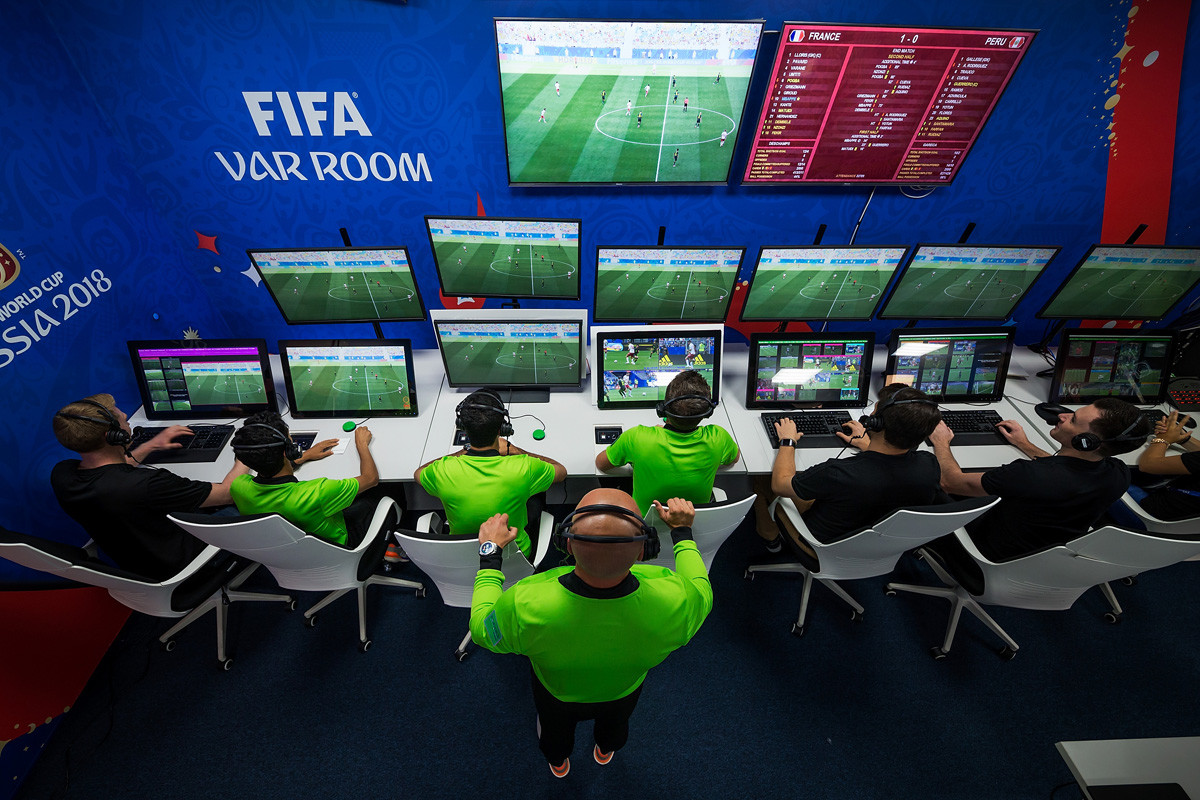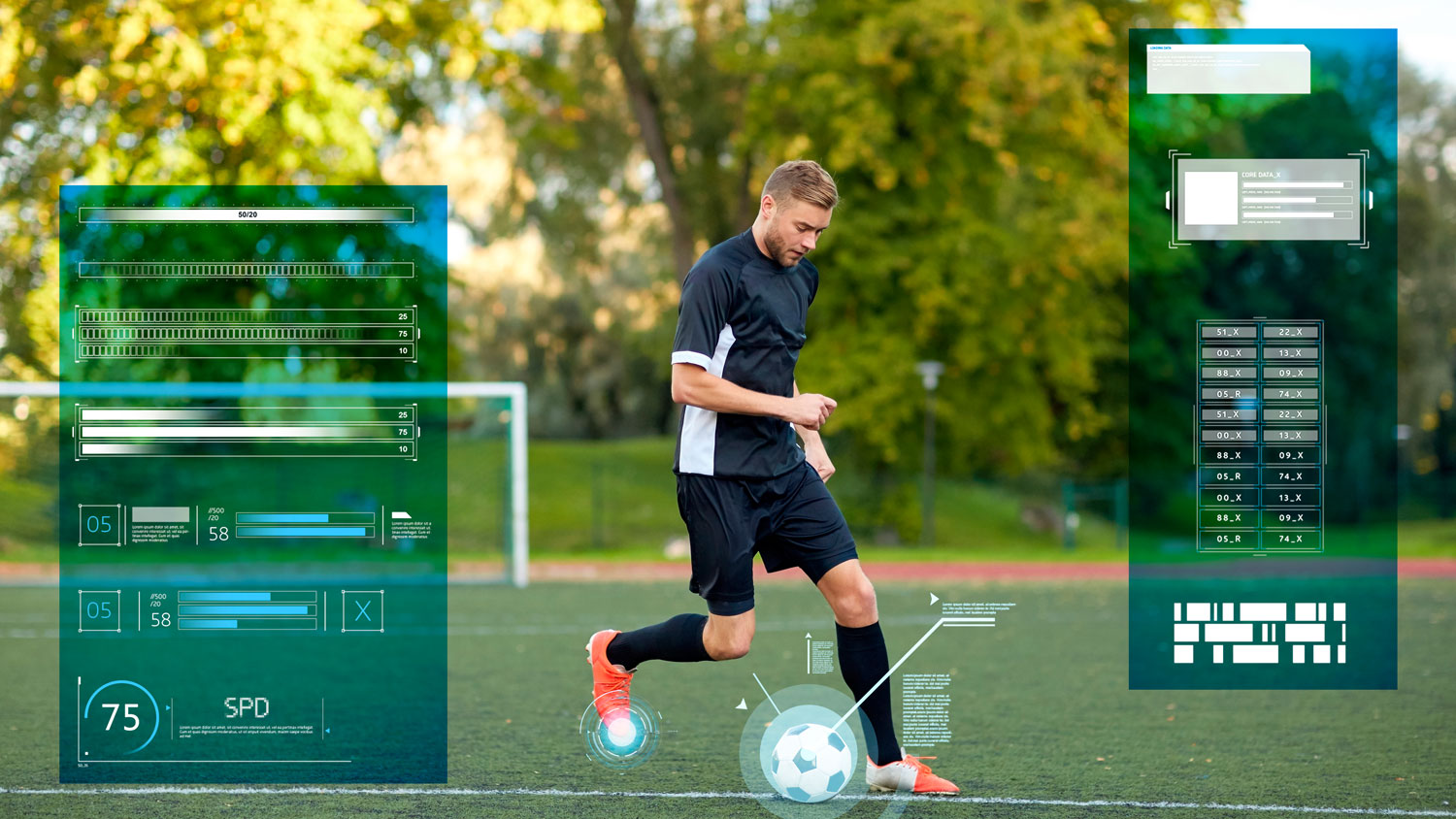Since soccer is in fashion these months, due to the 2022 FIFA World Cup™ in Qatar, I have allowed myself to analyze and describe the way that technological innovation has impacted this sport.
Creativity has no limits and, in the sports industry, innovation is constant, whether it is to improve the performance of the athlete himself or the fan experience. The companies in the sector invest incessantly in their R&D departments so as not to be left behind in this race towards innovation, and the new projects that are born seek to satisfy needs that are still to be covered. But if one thing they have in common is technology.
FIFA’s High Performance Programs Department team of football analytics experts, engineers and data scientists have developed innovative technology that provides state-of-the-art statistics and data.
Using this data, FIFA will be able to carry out a longitudinal analysis post-match to understand how football is evolving and a synchronous analysis of development, aimed at understanding more precisely what is required to progress.
“We want to share our idea that the analysis of the data, together with the interpretation of it by technical experts, serves to approach football from a new scientific perspective that helps to better understand the game” – Arsène Wenger

Technological innovation at the World Cup in Qatar
FIFA announced that artificial intelligence will collaborate in the detection of offsides during the World Cup in Qatar. Semi-automated technology will enable “faster, more accurate and more reliable decisions” during the World Cup.
The system will use the images captured by 12 cameras “installed under the roof of the stadium, which will capture the movements of the soccer ball and up to 29 data points of each player, 50 times per second.” Thus, the position of each footballer on the pitch can be accurately determined, including the limbs and body parts that matter when signaling offside.
FIFA details that the Sports Lab of the Massachusetts Institute of Technology (MIT) “analyzed and confirmed the data collected during the trials.” In addition, experts from the University of Victoria (Australia) “scientifically accredited the limb detection technology.” Finally, “a research team from ETH University (Switzerland) provided more information on the technological capabilities of these electronic multi-camera tracking systems.”
FIFA would be presenting all the data with this new technology to the 32 teams classified for the tournament in Doha and then they will make them public, after the World Cup.
At the 2022 FIFA World Cup™ in Qatar, new parameters were introduced:
- Ball possession
- Recovery time
- Rupture of rival lines
- Defensive line height and field length occupancy
- Innings in the last third of the field
- Caused turnovers
- Pressure on the ball
- Predicted goals
- Technical drawing
- Receiving passes behind the defensive line and the midfield
- Game phases

Innovation in sport has technology as an ally – Johan Cruyff
For that reason; I describe below some other of the technologies that have been implemented for this last World Cup
Identification systems
The Fan ID is an identification technology through a chip in which all the bearer’s data is collected. It allows, for example, to enter a country just to watch a football game for 10 days. Due to the implantation of this chip, basic services for the user can be included, such as free transport, access to exclusive spaces, etc.
Smart soccer shoes
Sports brands are not far behind in the use of technology applied to football. Many of the best-selling brands already have special editions of models in their catalog that use technology to perfectly adapt to the foot of each player.
Smart ball
The balo is new, inside which there is a chip that allows it to connect with a Smartphone or Tablet. In this way, coaches can create special exercises for their players in order to train certain impacts on the ball, special controls, as well as record all data and information.
Gol Control Monitoring of vital signs
Goal line technology to avoid ghost goals. It is a camera system to help the referee and placed facing the goal to control the goal line.
EPST
A system that allows collecting data to analyze everything that happens in the field. EPTS is an electronic performance tracking device.
It is a technology that allows monitoring and improving individual and group performance in soccer. This technology collects the movements of the players and the ball, which, mixed with other data capture devices such as accelerometers, gyroscopes or heart rate monitors, offer very important information for subsequent analysis by the coaching staff.
GPS training vests
Weighing only 66 grams, this vest is capable of collecting and measuring the heart rate of each player, accelerations, decelerations, the number of ball passes, the kilometers covered, the body impacts and the wear and tear on the players.
4k broadcasts
Although it is not given as much importance as other technologies, this undoubtedly helps the loyalty of the fans. The high resolution of football matches is already offered on different payment platforms where the matches are broadcast.
RFID tickets
Surely the best technology in football is precisely the one that aims to prevent fraud from illegal, counterfeit or resold tickets. It is a technology that is not new but that is already applied in soccer in many of the FIFA matches.
Sensors
They are used in vests, jerseys, soccer shoes, balls… but also in external devices that allow the player or the soccer field to be targeted to know each movement and control performance.
Use of stem cell treatments
Another of the factors, without a doubt, that stands out most in the sports management of a club is what concerns the health of its players. Prevent injuries, illnesses or risks that endanger the sports performance of each player.
In this sense, elite athletes of all sports or even regular users already use these treatments that apply technology in soccer to use the player’s own blood and cure their ailments by extracting stem cells.
Nutrition technology
Following this line of health in athletes, there are also different applications of technology in soccer that allow us to focus on the diet and nutrition of soccer team players. Thus, according to the needs of each one, the best nutrition solutions can be assigned.
What will football be like in 2030?
The football of the future will be experienced live in stadiums equipped with the latest technology and all kinds of comforts for the spectator, who today has to suffer to connect to the stadium’s WiFi. Technology is one of the basic pillars of the soccer stadiums of the future, much more than placing a giant screen to see the replay of the goals or developing a personalized app to access the data of the soccer players.
The most ambitious experiences exist in the United States, especially in the NBA games or the gigantic NFL stadiums where it is possible to do almost anything. Highlights, for example; Levi’s Stadium, home of the San Francisco 49ers and site of the last Super Bowl. It is not in Silicon Valley by chance. It has more than 1,200 free high-speed WiFi access points compatible with 2.5 and 5GHz bands, so that no viewer is ever more than three meters from a wireless signal. In addition, the stadium has its own application with which you can enter the venue, check the statistics in real time and even watch video replays of the most important plays from different angles in a matter of seconds.
The Levi’s Stadium app allows you to order food and drinks through the app and receive it at the same seat and is capable of offering statistics on which are the least used bathrooms in the stadium or information on the free car parks closest to your seat. The stadium has around 2,000 screens distributed throughout the stadium, as well as two giant scoreboards 60 meters wide that are capable of offering several signals simultaneously.
Stadium technology is not tied exclusively to Internet access, as demonstrated by the Verizon Center of the Washington Wizards of the NBA, which is preparing to incorporate a modern sound amplification system so that the court reverberates in all possible corners. Everything to offer a unique experience to the viewer.
In conclusion; We are in the times of greatest technological revolution in our history, advancing at a very fast pace that is constantly accelerating.
We can come to determine that a greater degree of precision and fairness has been achieved in the arbitrations, allowing a greater approach to the public.
Technology has been gradually influencing the sport, for its improvement, in terms of precision, efficiency, performance, etc. This has allowed a greater accuracy of the marking of points in each sport. That is why, thanks to these technological advances, athletes have managed to break world records that seemed impossible 10 years ago.
In that life it is very important to keep in mind that despite all these innovations that have been coming and will continue to come over time, we cannot allow ourselves to lose the essence of the sport.
LEAVE YOUR COMMENT BELOW
